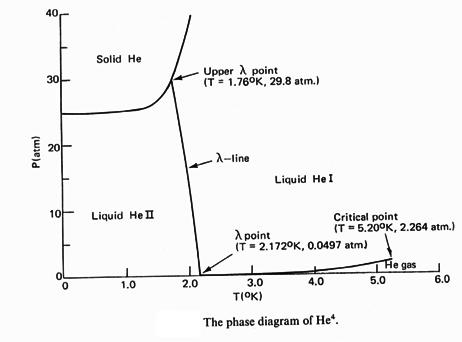Superfluids
Superconductors
Superfluids all have the unique quality that all their atoms are in the same quantum state. This means they all have the same momentum, and if one moves, they all move. This allows superfluids to move without friction through the tiniest of cracks, and superfluid helium will even flow up the sides of a jar and over the top. This apparant defiance of gravity comes from a special type of surface wave present in superfluid helium, which in effect pushes this extremely thin film up the sides of the container. It was discovered in 1962 by Tisza, who named the phenomenon third sound. Another unusual result of third sound is the fountain effect, where superfluid excited by photons will form a fountain vertically upward off of its surface.
Superfluids also have an amazingly high thermal conductivity. When heat is introduced to a normal system, it diffuses through the system slowly. In a superfluid, heat is transmitted so fast that thermal waves become possible. This fourth kind of wave found in superfluids is called second sound, quite improperly becuase they involve no pressure variations.
Despite these strange wave properties, superfluids can also transmit normal pressure (sound) waves. Scientists were perplexed by these strange occurences along with rather normal ones, so they came up with a two-fluid model to describe superfluids. Landau and Tisza came up with the theory independently in 1941 and 1940. They postulated that superfluids consist of a percentage of atoms in the same quantum state and functioning as a single entity, and a percentage in the normal, varying quantum states. The amount of normal atoms goes down as absolute zero is approached. This theory worked beautifully to explain most superfluid phenomenon, but physicists are still adding to it today as they discover new properties.
Another unusual phenomenon within superfluids is their ability to quantize vortices. If you spin a bucket full of water, a whirlpool like pattern will occur (called a vortice), with the water at the center moving slowly and gradually speeding up as you move out from the center. In a superfluid, many minute vortices occur. The number of vortices is proportional to h/m, where h is Planck's constant and m is the mass of one atom. Quantized vortices are of great interest to the further study of quantum fluids, and they turn out to be theoretically similar to flux lines in superconductors.

Phase diagram of superfluid He-4 (from J.C.Davis Group, Cornell)